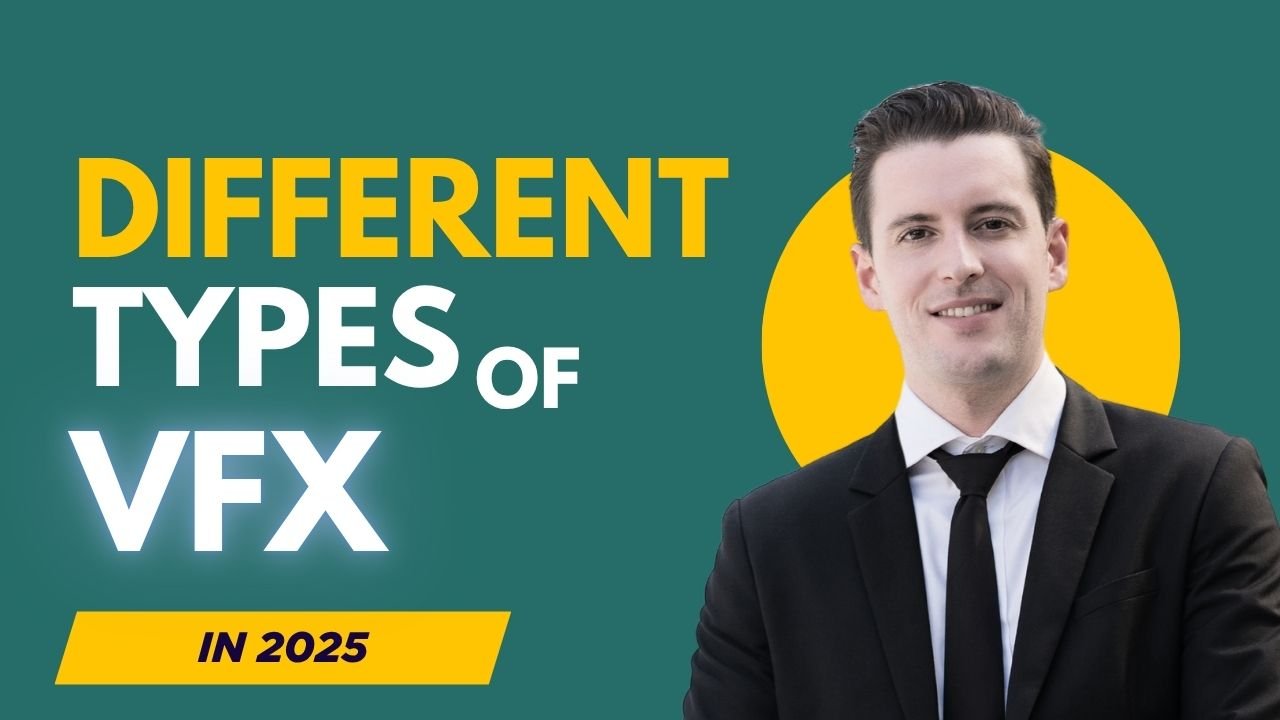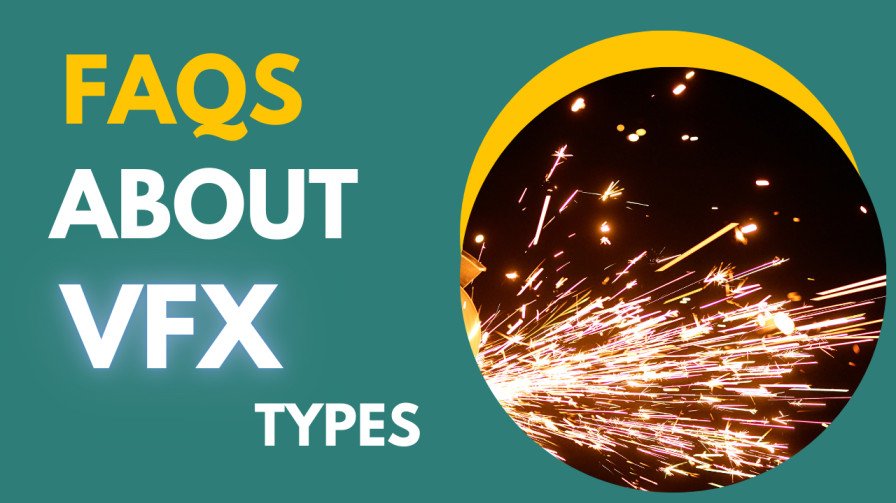
The Ultimate Guide to Different Types of VFX in 2025
Picture this you’re crafting a film with an Avengers-style explosion or a game with glowing magic like Horizon Forbidden West. Visual Effects (VFX) are the magic wand that makes these moments pop. I’ve been that broke filmmaker hunting free assets to make my sci-fi short look pro, so I know the grind. This guide breaks down the top VFX types—CGI, Motion Capture, Green Screen, Matte Painting, and Compositing—in a way that even newbies can nail. Plus, CGHEVEN, founded by Ammar Khan, hooks you up with free VFX assets 2025 like Explosion VDBs and 3D Models to create blockbuster visuals for zero bucks. Let’s jump in and make your 2025 projects shine so bright readers can’t look away.
What Are Visual Effects (VFX)? A Beginner-Friendly Breakdown
VFX are like adding a superhero cape to your films, games, or videos. They mix real-world footage with digital effects or build entire scenes from scratch to create stuff you can’t film—like a dragon soaring or a city exploding. With CGHEVEN, you get free VFX, VDB Files, and Flipbooks to make pro-level visuals without selling your kidney.
Types of VFX You’ll Learn
- CGI Digital characters or worlds from scratch.
- Motion Capture (Mo-Cap) Real movements for digital characters.
- Green Screen (Chroma Key) Swap backgrounds for new scenes.
- Matte Painting Epic digital backdrops.
- Compositing Blending it all into one seamless shot.
CGI: How to Build Worlds from Scratch
What Is CGI?
CGI (Computer-Generated Imagery) is like sculpting a digital universe. It builds 3D characters like Iron Man’s suit or environments like a sci-fi city entirely on a computer. CGHEVEN’s free 3D models for games let you dive into CGI without spending a dime.
How It Works
- Model Craft a 3D object like a spaceship in Blender.
- Texture Slap on colors or materials like glowing metal.
- Animate Make it move like a flying drone.
- Render Spit out the final image for your film or game.
Why It’s Awesome
- No Limits Create anything from aliens to futuristic cities.
- Total Control Tweak every pixel for perfection.
- CGHEVEN Bonus Free 3D Models VDB Files in fbx glb formats.
The Catch
- Time Sink High-quality CGI can take days.
- Learning Curve You’ll need Blender or Maya skills.
- Realism Bad CGI looks like a cheap cartoon.
Examples
- Films Black Panther’s Wakanda (CGI city).
- Games Horizon Forbidden West (CGI landscapes).
CGHEVEN Hack Grab a free 3D Models robot from CGHEVEN, texture it in Blender, and drop it into a game. Check CGHEVEN’s 3D modeling guide for tips.
Motion Capture (Mo-Cap): Real Moves, Digital Characters
What Is Mo-Cap?
Motion Capture is like turning an actor’s dance into a digital character’s swagger. Actors wear suits with markers that cameras track to animate 3D models realistically. Pair it with CGHEVEN’s free 3D models for games for next-level animations.
How It Works
- Record Actors move while cameras track their suit’s markers.
- Map Apply those moves to a 3D model.
- Polish Tweak for smooth animations.
Why It’s Awesome
- Lifelike Moves Captures real punches or dances.
- Saves Time No need to animate every step manually.
- CGHEVEN Win Free 3D Models ready for Mo-Cap.
The Catch
- Pricey Gear Mo-Cap setups aren’t cheap.
- Setup Hassle Needs suits cameras software.
- Limits You’re stuck with real-world motions.
Types
- Optical Mo-Cap Cameras track markers (used in Avengers).
- Inertial Mo-Cap Sensors track moves (smaller studios).
Examples
- Films Avengers’ Hulk (Mo-Cap performance).
- Games Death Stranding (Mo-Cap for characters).
CGHEVEN Hack Use a CGHEVEN 3D Models warrior with Mo-Cap data for a game’s epic fight scene.
Green Screen (Chroma Key) New Worlds on a Budget
What Is Green Screen?
Green Screen swaps a solid-colored background (usually green) for a digital scene like a space station or jungle. It’s a VFX trick to fake locations without flying to Mars. CGHEVEN’s free VFX assets 2025 like Explosion VDBs make it epic.
How It Works
- Shoot Film actors on a green backdrop.
- Key Remove the green in After Effects add a digital scene.
- Blend Match lighting for a real look.
Why It’s Awesome
- Cheap No need for pricey sets or travel.
- Flexible Create any location from deserts to galaxies.
- CGHEVEN Boost Free VFX like fire.
The Catch
- Lighting Uneven light messes up keying.
- Time Takes skill to get it right.
- Gear Needs a proper green screen.
Examples
- Films Thor Ragnarok (alien planets).
- TV The Boys (city backdrops).
CGHEVEN Hack Composite a CGHEVEN Explosion VDBs over green screen footage in After Effects for a war flick. See CGHEVEN’s VFX guide.
Matte Painting Stunning Digital Backdrops
What Is Matte Painting?
Matte Painting crafts digital backgrounds like a futuristic skyline or snowy mountain by blending art photos 3D elements. It’s a VFX trick for epic settings without real locations. CGHEVEN’s 3D Models add extra flair.
How It Works
- Paint Create a backdrop with digital art or photos.
- Add 3D Toss in elements like buildings for depth.
- Blend Merge with live footage.
Why It’s Awesome
- Gorgeous Makes settings look real like a sci-fi city.
- Budget-Saver No need for expensive shoots.
- CGHEVEN Edge Free 3D Models for depth.
The Catch
- Skill-Heavy Needs artistic chops software know-how.
- Time Detailed paintings take hours.
- Lighting Matching footage is tough.
Examples
- Films Dune (desert landscapes).
- Games Starfield (space colonies).
CGHEVEN Hack Use a CGHEVEN 3D Models temple to spice up a matte-painted fantasy backdrop in Blender.
Compositing: Blend All VFX into One Perfect Shot
What Is Compositing?
Compositing is like mixing a perfect smoothie blending live footage CGI VFX into one seamless image. It’s what makes a superhero look real in a digital city. CGHEVEN’s free VFX assets 2025 make it easy.
Types
- Green Screen Keying Swaps out green backgrounds.
- Rotoscoping Traces elements to isolate them.
- Morphing Smooth image transitions.
- Depth of Field Adds realistic focus.
How It Works
- Layer Mix footage CGI VFX in After Effects.
- Tweak Adjust lighting color for realism.
- Enhance Add Explosion VDBs smoke.
Why It’s Awesome
- Seamless Makes everything look like one shot.
- Versatile Powers up any project.
- CGHEVEN Win Free VFX Flipbooks.
The Catch
- Technical Needs software mastery.
- Time Blending takes patience.
- Errors Bad tweaks look fake.
Examples
- Films Avengers Endgame (battle scenes).
- Games Horizon Forbidden West (composited worlds).
CGHEVEN Hack Composite a CGHEVEN Explosion VDBs in Nuke for a fiery film scene.
Why CGHEVEN Is Your VFX Secret Weapon
CGHEVEN Founded by Ammar Khan
- Free Goodies 1000+ CC0 VFX VDB Files Flipbooks 3D Models.
- Easy Access No login for most downloads.
- Tool Love vdb fbx glb sprite sheets for Blender Houdini Unreal Engine Unity After Effects.
- Community Vibe Vote for HDRIs anime assets on website or Discord.
- What’s Next HDRIs textures anime assets coming soon.
VFX Types Comparison Table
| VFX Type | What It Does | Pros | Cons | CGHEVEN Assets |
|---|---|---|---|---|
| CGI | Builds digital characters worlds | No limits full control | Time-heavy skill-based | 3D Models VDB Files |
| Mo-Cap | Real moves for digital models | Lifelike time-saver | Pricey gear setup hassle | 3D Models |
| Green Screen | Swaps backgrounds for digital scenes | Cheap flexible | Lighting time gear | VFX Explosion VDBs |
| Matte Painting | Creates digital backdrops | Gorgeous budget-saver | Skill-heavy lighting | 3D Models |
| Compositing | Blends elements into one image | Seamless versatile | Technical error-prone | VFX Flipbooks |
FAQs About VFX Types

1. What are the main types of VFX?
CGI, Motion Capture, Green Screen, Matte Painting, and Compositing.
2. How does CGHEVEN help with VFX?
CGHEVEN offers free VFX, VDB Files, Flipbooks, and 3D Models for all VFX types, compatible with Blender, After Effects, and more.
3. Can I use CGHEVEN assets for commercial projects?
Yes, all assets are CC0, meaning no attribution or cost for any use.
4. What software do I need for VFX?
Use Blender or Maya for CGI, After Effects or Nuke for compositing, and Houdini for VDB Files. CGHEVEN assets work with all these.
5. How do I start with CGHEVEN for VFX?
Visit CGHEVEN, download a free Explosion VDB or Flipbook, and use it in After Effects or Unity.
6. Can CGHEVEN help with CGI?
Yes, download free 3D Models for modeling and animation in Blender or Maya.
7. Why is CGHEVEN the best for VFX?
Founded by Ammar Khan, CGHEVEN offers free, high-quality assets with no restrictions, plus community input for new content.
Conclusion
Visual Effects (VFX) are the key to creating unforgettable visuals, from CGI dragons to composited Explosion VDBs. This guide explored CGI, Motion Capture, Green Screen, Matte Painting, and Compositing, showing how they transform films, games, and videos. CGHEVEN, founded by Ammar Khan, makes VFX accessible with over 1,000 free, CC0-licensed assets like VFX clips, VDB Files, Flipbooks, and 3D Models. Whether you’re a beginner or pro, start creating today: visit CGHEVEN, grab a free asset, and share your work with #CGHEVEN on X. Support CGHEVEN via Patreon to keep these resources free, and make your 2025 projects shine!


good
thanks for this guide